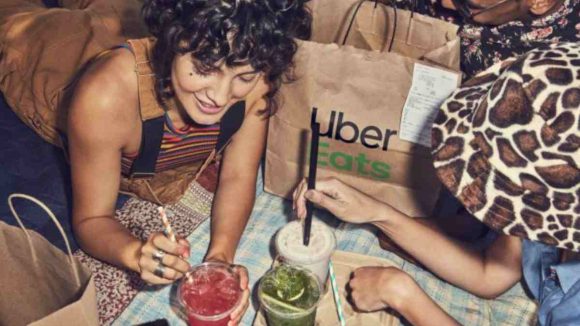There has been a massive appetite to serve new technology that improves the customer experience when using online food delivery services. They’ve tasted AI-powered assistance, and plenty is on the menu for 2024.
Locate2u News looks at the initiatives that changed the delivery landscape and inspired competitors to follow suit or even take it one notch up.
Innovation trends 2023
In October, Uber Eats changed how customers ordered, making space for orders from multiple restaurants in one go. The ‘multi-store ordering’ feature allows customers to pick dishes from two restaurants, given that they are nearby, without paying an additional delivery fee.
Another big move from Uber Eats in 2023 was allowing customers to return their packages. Only five parcels can now be returned via Uber’s reverse logistics system.
ALSO READ: Small orders, big impact: Uber Eats introduces an extra charge
Looking at what DoorDash has been keeping itself busy with, they’ve focused on customer service. They are resolving the poor tipping culture by adding new features to encourage customers to tip drivers. Not everyone is pleased with this, especially non-tippers who now have to wait extra long for orders.
In May, Delivery Hero took the first jump with the AI-powered assistant. Using generative AI, the shopping assistant enables customers to order through Talabat Mart, the company’s grocery delivery service. They can search for recipes and identify the corresponding available ingredients simultaneously.
Next to follow is DoorDash, which launched AI-powered voice ordering technology a few months later. This is to improve its restaurant support. But rival Uber Eats is hot on their hills, also developing an AI-powered chatbot. This will hopefully improve the poor answer rate at restaurants while being more cost-effective.
Looking forward to 2024
Uber Tasks is expected to be rolled out to more cities this year (2024). The personal helper for errands can be a big game changer for a business. It could mean an extra pair of hands for packing or unpacking trucks, holiday packaging, snow removal, or any other basic errands that need to be done.
Deliveroo is planning to change its menu a bit. It’s being reported that Deliveroo is considering selling everything from “hammers and drills to makeup in a bid to boost its flagging growth rate.”
Customers can soon order anything from electronics, toys, and beauty products on the delivery app.
In the bigger scheme, HTF Market Intelligence predicts that the food delivery market will increase by $642 billion at a CAGR of 11.3% by 2029. The market research examines, among others, Deliveroo, Delivery Hero, Uber Eats, and DoorDash.
The digital food delivery market is witnessing several notable trends shaping its evolution and growth. Another rising trend to look out for in 2024 is eco-friendly environments, recyclable packaging, electric delivery vehicles, and a strong focus on sustainability overall.
Top five food delivery apps
Contributing to the e-commerce economy, online delivery platforms play a pivotal role in this sector. But who are the main drivers making the industry’s biggest waves?
Business of Apps has rated the top apps and their unique contribution to the delivery sector.
Uber Eats: The most widely available food delivery service with activity in six continents.
DoorDash: Pioneered the platform-to-consumer model.
Deliveroo: Pioneer of platform-to-consumer service in the UK.
GrubHub: Original takeaway aggregator in America with a large user base in New York City.
Delivery Hero: Through its many subsidiaries, it has a controlling interest in food delivery platforms in over 40 countries.
How to rank higher on food delivery platforms
Joining online food delivery platforms as a restaurant can kick off on a very competitive note. Learning how these platforms work can help you understand the algorithms, enhance visibility, and improve your platform ranking, says Deliverect.
Here are five things that can instantly improve your ranking:
- Offer promotions: Most delivery apps have special deals sections. It’s usually the first thing you see.
- Improve conversion rate: How many customers who view your menu go on to order? You can improve this by improving photos, descriptions, and prices.
- Streamline operations: Acceptance rate, cancellation rate, and average order accuracy.
- Improve delivery time: Timely delivery is crucial for online orders. It also improves ratings.
- Get featured: Deliverect says Uber Eats has a ‘Top Picks’ or ‘Featured’ carousel. Getting into these sections boosts your restaurant’s visibility quickly.
Suppose there is one piece of advice from experts going into 2024: well-established and emerging players in the online food delivery space should focus on reinventing traditional business and operating models to adapt to the future.
If 2023 goes into the history books as the year of AI-powered assistance, it’s exciting to imagine what this year will deliver.
About the author
Mia is a multi-award-winning journalist. She has more than 14 years of experience in mainstream media. She's covered many historic moments that happened in Africa and internationally. She has a strong focus on human interest stories, to bring her readers and viewers closer to the topics at hand.











